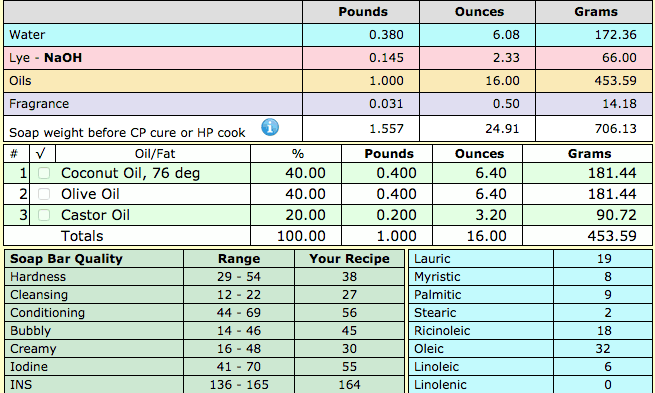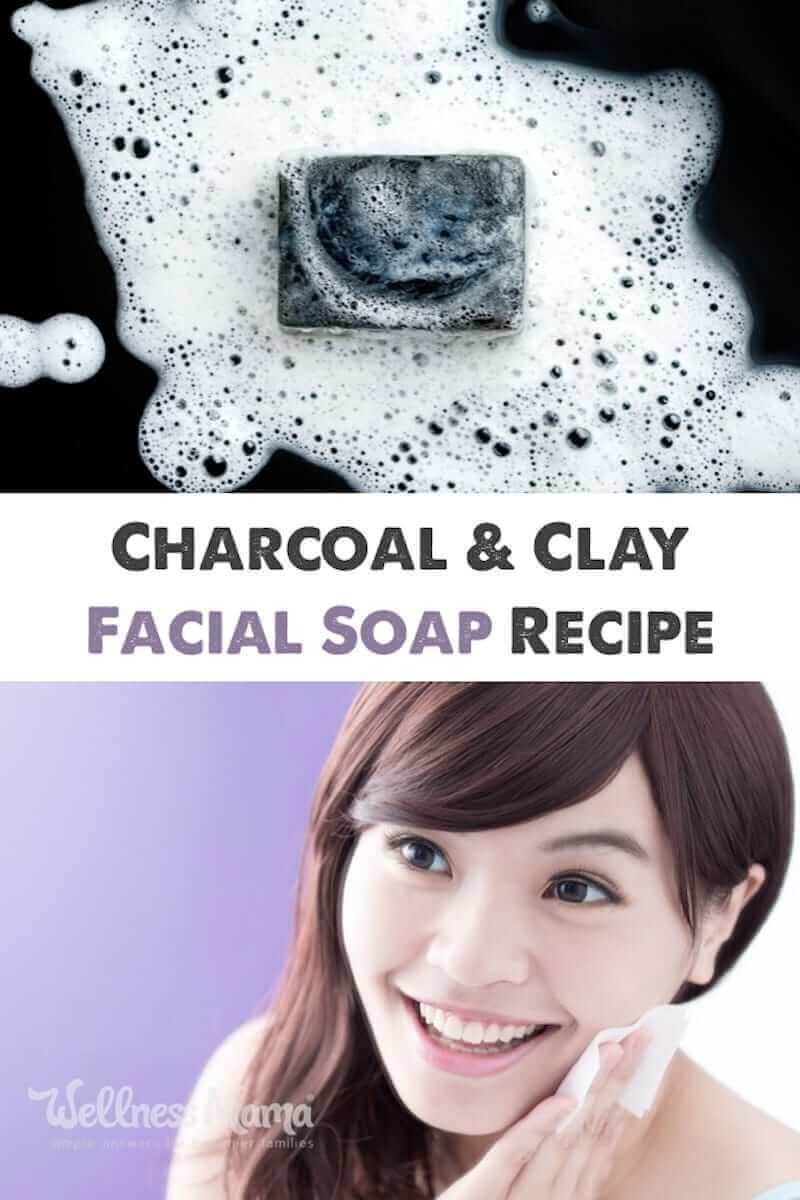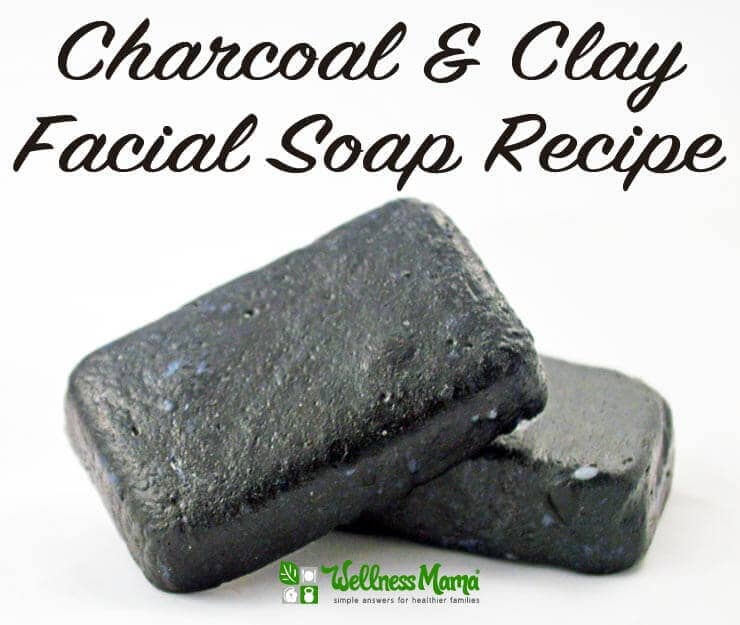I’ve been making my own soap for a long time, both by cold process and hot process in a crock pot. It can seem really intimidating to begin making your own soap, but everyone I know who actually tries it is amazed at how simple it is.
Hot vs. Cold Process Soap
As I explained before, both methods of soap making use water, lye and a combination of oils. The additional step of heating the mixture with hot process soap speeds the saponification process and results in a faster soap making process.
There are advantages and disadvantages to each type of soap. Hot process creates a faster soap, and cold process often creates a smoother soap, though I’ve found both work great on my skin.
A third option I’ve only experimented with slightly is using a melt and pour soap base (like this cocoa butter soap base or this goats milk soap base). This option does not require any Lye and is faster and easier for those who don’t want to deal with the chemistry of soap making. Essential oils, clays, salts and other natural ingredients can still be added with melt and pour soap, but I prefer to use the hot or cold process method so I can control the oil ratios in the soap.
Melt and pour soap can be a gateway into regular soap-making for those still a little hesitant to use Lye, but I’ve found that the most cost-effective and natural option is to start from scratch.
Is Lye Dangerous?
As I explained in my original soap recipe:
When Lye is used in soap-making, it is what is called a reagent, meaning it is used in a chemical reaction to create other substances. In soap making, a carefully measured water/lye mixture is blended with natural oils in a process called saponification. Lye is simply an agent used to create soap from oils and water.
There is no unreacted Lye remaining in properly made soap. If you’re considering making soap, definitely use extreme caution with unreacted lye and use a soap calculator to make sure you are using the correct ratio of water/lye/oils but don’t be afraid of this age old process.
Where to Find Lye: Some hardware stores carry Lye (sodium hydroxide) though many have stopped carrying it. I wasn’t able to find it at any of our four local hardware stores so I ordered this one online. If you have a local (not big brand) hardware store they might also be able to special order it for you.
I now feel safe using Lye for soap making, I just take precautions and don’t use it when my children or around. It is also very important to remember to add lye to the water and NOT water to the Lye (which can cause an explosion).
Clay and Charcoal?
Why add clay and charcoal to soap? When I first started experimenting with adding these to my soap recipes, I was a little unsure how they would turn out. After all, these are both great for face masks and whitening teeth, but wouldn’t they leave residue on skin?
I found that they absolutely do not leave a residue on skin, and that they are absolutely perfect for oily or acne prone skin since they are naturally anti-bacterial and toxin removing.
In fact, I made these as a body soap (and they can definitely be used that way) but I fell in love with them as a gentle facial soap that works incredibly well. I still use the oil cleansing method but for other times when I need to wash my face, I use this gentle cleansing soap.
I add activated charcoal powder and bentonite clay to this recipe. I’ve found that this also extends the life of the soap.
Calculating Percentages
I used SoapCalc.net to calculate the ratios for this soap, and I highly recommend it, especially if you are new to soap making. I wanted to use a mixture of coconut oil, olive oil and castor oil so I entered these into the soap calculator and got these percentages:

With soap making, it is very important to measure the weight. I use a digital scale and measure by grams to be most precise. This ensures that there is no remaining Lye in the recipe and that the oils fully saponify. I also keep the following tools and supplies on hand for soap making:
- A slow-cooker (I got an older one at a thrift store)
- A digital scale (this is important for making a soap that is not too harsh or too oily)
- Glass jars and bowls
- A stick blender
- plastic cups (optional)
- A metal spoon
- A wooden spoon
- A spatula
- Soap molds (or an old cardboard box lined with parchment paper). I have green flower molds, red silicon rose molds and basic bar soap molds.
- Gloves and sunglasses or eyewear
- A large bottle of white vinegar for neutralizing the lye mixture if it spills on anything.
Charcoal Soap Ingredients:
- 172.36 grams (6.08 ounces) of filtered water
- 66 grams (2.33 ounces) Lye
- 181.44 grams (6.4 ounces) Coconut Oil
- 181.44 grams (6.4 ounces) Olive Oil
- 90.72 grams (3.2 ounces) Castor Oil
- 1 tablespoon activated charcoal powder
- 1 tablespoon bentonite clay powder
- 1 ounce of essential oil of choice (or blend) I used lavender and tea tree
How to Make Charcoal Soap
- Make sure that your work area is clean, ventilated and that there are no children nearby. This is not a good recipe to let children help with since Lye is caustic until mixed with water and oils.
- Measure the oils in liquid form (by weight) and pour into the slow cooker. Turn on high just until oils heat up and then reduce to low heat. At this time, Add the clay and charcoal and use a stick blender to incorporate fully.
- While oils are heating, carefully measure the lye and water separately. TIP: This is the only thing I ever use disposable plastic cups for. They don’t weigh anything on the scale so they make measuring easy and I keep three separate cups labeled:
- Water, Lye and Oil to use for this purpose only. I reuse them each time so they aren’t wasted and I don’t worry about anyone drinking out of them since we don’t usually use these types of cups.
- Carefully take the cups with the water and the lye outside or to a well ventilated area. Pour the water into a quart size or larger glass jar. With gloves and eye protection, slowly add the lye to the water. DO NOT ADD THE WATER TO THE LYE (this is really important). Stir carefully with a metal spoon, making sure not to let the liquid come in contact with your body directly.
- As you stir, this will create a cloudy white mixture that gets really hot. Let this mixture set for about 10 minutes to cool. It should become clear and not cloudy when it has cooled.
- When the oils in the crockpot have heated (to about 120-130 degrees F), slowly pour in the water and lye mixture and stir.
- Quickly rinse the container used for the water and lye mixture out in the sink. I rinse well and then re-rinse with white vinegar to make sure all Lye has been neutralized.
- Use the metal or wooden spoon to stir the lye/water mixture into the oil mixture in the crockpot. Once it is evenly mixed, use the stick blender to blend for about 4-5 minutes or until it is opaque and starting to thicken.
- Cover and keep on low heat to thicken. I set a timer for 15 minutes and check it every 15 minutes until it is ready. It will start to boil and bubble on the sides first. After about 35-55 minutes (depending on crock pot) it will thicken enough that the entire surface is bubbly and the sides have collapsed in.
- At this point, turn the heat off and remove the crock. If you are going to use essential oils for scent, add them now. I added lavender and orange.
- Quickly and carefully spoon into molds. I’ve often heard of people using empty Pringles containers but haven’t tried it. I have used empty boxes lined with parchment paper.
- Cover the molds with parchment paper and set in a cool, dry place.
After 24 hours, pop the soap out of the molds. It can be used right away, but I prefer to let it set for a few more days so that it lasts longer.
This soap will leave a little bit of residue in the bottom of the shower over time, but I’ve found that this is easy to clean with a quick microfiber wipe down each day.
Ever made your own soap? How did it go?



Leave a Reply